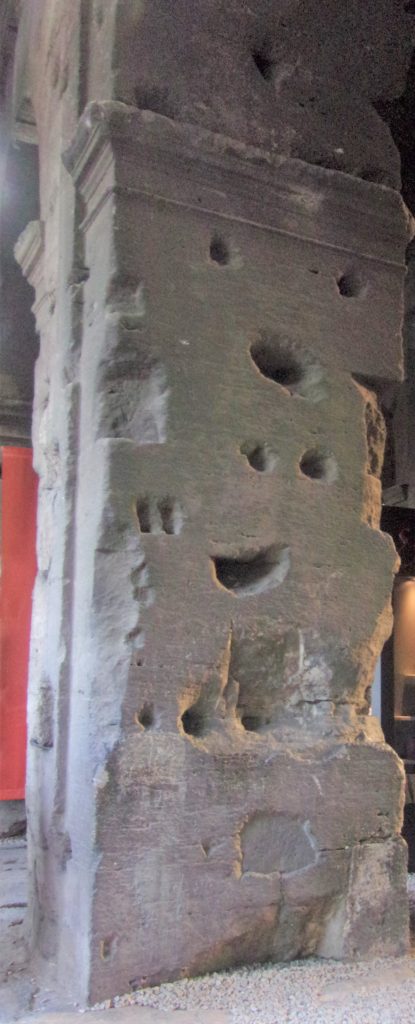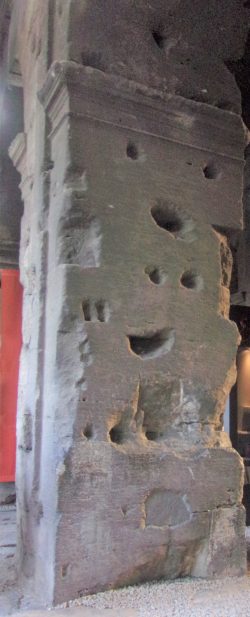
Rome is filled with history. At almost every turn a person notices something new, and yet it could be ages old. This is especially true when exploring the major sites like the Colosseum, The Roman Forum, Palatine Hill, and other ruins surrounding these areas. Ancient Rome is incredible.
One of the small, but interesting spectacles of Rome is the mysterious holes within the Colosseum’s massive stone walls. Numerous cavities are noticed all over the place. It’s clearly understandable why so many call the Colosseum ‘Swiss Cheese’. But why does the Colosseum have these holes?
A simple and quick answer is it was being robbed for its hidden materials after the population of Rome declined and structures, like the Colosseum, went into disuse.
The Colosseum’s construction began in 72 AD under the emperor Vespasian. It was completed eight years later in 80 AD under his son, the emperor Titus. This oval amphitheatre was the largest one ever built and could hold over 50,000 spectators. It was used for not only the infamous gladiatorial contests, but for battle re-enactments, mythological dramas, executions, and animal hunts.
At the inaugural games, which celebrated the completion of the Colosseum, it’s believed more than 9000 animals of various types, like lions, wild boars, tigers, rhinoceros, elephants, and bears were killed during the 100 days of these festivities.
Some of the cavities of the lower level walls were made during construction to accommodate these games. They were slots for the workings of the many trap doors and ramps from which the animals, and other entertainments, were raised to the Colosseum’s ‘stage floor’.
But the thousands upon thousands other holes were made by workers pilfering the iron so to use it on other structures or for weaponry.
When the Colosseum was built, workers used iron clamps in between the heavy bricks to secure them together instead of mortar. It was this metal material, estimated to be over 200 tons of it, which became highly valued and scarce after the fall of Rome. Visitors are able to place their hands in these holes and feel the hollows where the metals have been taken out.
Much of the other materials, which was used to make the Colosseum one of the most impressive structures of its time, were pilfered as well. Stones, and all of the outer and decorative marble from the amphitheater were taken to help build St. Peter’s Basilica and other structures in the 1500’s. Although fire and earthquakes had damaged the Colosseum through the years, it was mostly the activity of reusing its materials that causes the Colosseum to appear as it does now. The ancient Roman structures were a prime source for building materials during medieval times.
They used old for the new, instead of preserving the ancient sites. The mysterious looking holes of the Colosseum remind us of this when visiting there today. Thank goodness some ruins still remain.
If interested in other sights from Rome, check out the video MW Travels to Rome!
Best of luck with all that you seek! Always Treasure the Adventure!
.

